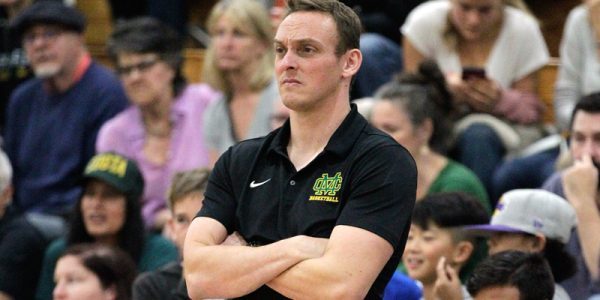Life is a complex tapestry that is enriched by various contributions. Among these individuals, there are cases of cerebral palsy, and they have a different trajectory that might require a special type of care and support.
By reading through this topic, I am struck by the courage and fortitude shown by those living with cerebral palsy as well as their families. The stories of theirs, which serve as an inspiration to us, deserve the provision of critical services and supports that might be necessary to bring forth their best and improve their quality of life.
“Cerebral palsy,” a group of diseases caused by the control of motion and muscle tone, is a combination of challenges that are different from person to person. The condition, often diagnosed in early childhood, is a result of some sort of brain damage or abnormal development, which typically happens before or during birth. There is no cure, yet, a number of services and supports can significantly improve the lives of those affected.
Physical therapy is the foundation of cerebral palsy care. With a therapy, you aim to attain not only an increase in mobility but also to prolong the attorney’s career, in other words, strengthening the muscles and approximate the coordination.
Such a therapy is not a mere contention of therapeutics procedures also to some the stretching as well as the gait training include almost all the global warming technologies. Time and again, mostly from early childhood, sessions such as these can be life-changing, assisting people in achieving their goals that were impossible before.
Like physical therapy, occupational therapy deals with life skills. The therapists in this field create the conditions for individuals to master basic tasks of daily life, such as day-to-day activities, such as washing, feeding, and writing.
Besides, they may introduce the so-called adaptive equipment or must guide a normal way to accomplish activities. It is intended to enhance the autonomy and thus one’s self-esteem and thus involvement/participation in the family, school, and community.
Speech and language therapy is the other branch commonly treated in cerebral palsy care. There are a variety of challenges related to communication ranging from mild articulation problems to the severe ones which sometimes require communication aids or other interventions. Speech therapists who are taking care of children articulate words in exactly the right way, help children understand the meaning of words, and help them to use words in sentences properly. They also teach them other languages and construction of sentences. Moreover, they sometimes have an ambulatory assistive communication (AAC) device, which gives them opportunities for interaction and self-expression of a different and more accessible nature.
Assistive technology is transforming the way care is provided for cerebral palsy. Besides use for devices, such as cover wheelchairs and walkers as well as communication devices and computer adjustments, technology can remove boundaries and give various possibilities.
One of the things that continue to amaze me is the innovation of the developers behind these systems that help those with cerebral palsy to move with more ease and independence in the world.
Educational support is a crucial point for children with cerebral palsy. Many need individualized educational plans (IEPs) to address their unique learning needs. Special education teachers, together with other professionals, make their curricula personal, and their methods are adaptive. This type of support doesn’t stop at the academic level as it also includes the teaching of life skills and vocational training to ready students for independence in the future.
Medical treatment is the other major chunk of the support. Regular check-ups with pediatricians, neurologists, and orthopedic therapists that enable them to keep on monitoring the general health of a person and if some issues appear considering cerebral palsy. Some persons find it better to be prescribed medications to ease the symptoms like spasticity and seizures. In some cases, they may be operated on to facilitate motion or to ease the pain.
Counseling should be held as a part of comprehensive cerebral palsy care. A chronic condition is stressful and thus, both the sufferer and his family experience a lot of stress. Services offered by professional counselors, support groups, and psychotherapists could be proven beneficial means to get the depression and philosophize emotional support through counseling. They are the resources to address those challenges including anxiety, depression, and self-esteem issues that might surface in the course of treatment.
Respite care, which gives families with children with cerebral palsy a needed break, is an essential part of family life. Supporting families having a primary caretaker by respite care allows them to have a chance to breathe, recharge, and be responsible for other actions. They play a very important role in preventing caregiver burnout and they can be of different types, ranging from in-house help to short-term stays.
For children with cerebral palsy that grow up and get to see the adulthood era, career vocational training and employment support do work out as crucial things to do. These desiderata set the stage for individuals in finding and keeping good jobs by instilling job skills, assisting them to screen various career possibilities, and helping them to gain meaningful employment. In some cases, there are programs that might offer job coaching or supported employment choices to lead independence and, thus, a sense of purpose.
Youth activities, be that recreation or leisure, events often lightly treated are the key factors in upliftment of the life qualities. The activities can range from adaptive sports, creative arts, to community groups. They provide the opportunity for people with cerebral palsy to discover their talents, develop new skills, make new friends, and advocate for themselves. They not only lead to improvements in the overall well-being of the person, but they also generate a sense of belonging and community.
The scope of proper care for CP can be described as broad and multilayered. Any single one of the services will play an important role in the improvement of day-to-day life, be it medical intervention, education, assistive technology, or psychological help.
As we go along with our developing understanding and approach of CP care, cerebral palsy service provider and their role of dedicated CP providers assumes greater importance. These people act as guides for the individuals and their families, who help them navigate their way through the complex web of services available, which are meant to be provided to them.
The providers, in fact, are the intermediaries between the service system and the families. Jointly, the healthcare providers, educators, and families can form a new environment in which people with cerebral palsy are emboldened to pursue a life which will be satisfying and on which they would use all their potential.








